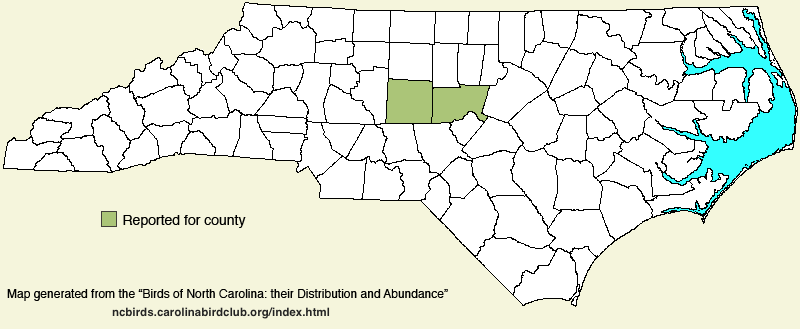| General Comments |
There are three state records of this species of western North America. Several dozen years ago, the Western Flycatcher was split into two "new" species -- the Pacific-slope Flycatcher (retaining the scientific name of E. difficilis) and the Cordilleran Flycatcher (E. occidentalis), the taxon occurring mainly in the Rocky Mountains. The first state record of the group was an individual found near Jordan Lake (Chatham) on 15 Jan 2000* and seen by many birders over the following week [Chat 67:96-100 link]. The second was one banded, measured, and photographed in Randolph on 11 Dec 2020* [Chat 85:142 link]. The first Coastal Plain record was one seen, photographed, and tape recorded at Buckhorn Reservoir (Wilson), from 26 Nov 2022 into the winter [Chat 87:15 link]; it was last noted on 25 Dec 2022 [Chat 87:40 link]. This last record will be reviewed by the NC BRC. In summer 2023, the American Ornithological Society re-lumped these two taxa, back into Western Flycatcher, which greatly simplifies the work of BRC's of the Eastern states! For what it is worth, the bird near Jordan Lake was identified in the field as a Pacific-slope, based on voice and likelihood. Photographs, voice recordings, and sonograms were not conclusive as to taxon, but enabled the NC BRC to accept the bird as a Pacific Slope/Cordilleran Flycatcher [Chat 67:2 link]. ["Pacific-slope" is listed first because that was the identification in the field.] |


